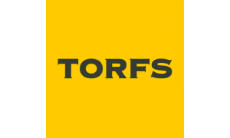In the first phase, we provide a set of services to get a retailer up and running. We connect to the client's data sources, find key patterns in terms of price elasticity based on previous sales periods, and train the markdown pricing algorithm accordingly. An algorithm that is further refined during the actual sales season, using the input of more recent information.
Once the sales season starts, we enter the second phase and a week-over-week sequence kicks off. Last week's sales information is downloaded and validated. Based on several parameters, the solution calculates new optimal price markdowns for the upcoming week.
This and additional information is displayed in two dashboards that enable follow-up and should instill trust in the process.
The first is a 'management dashboard' giving the category or pricing manager, a general overview of the situation. How are we doing in general? How much are we discounting? How are they distributed across different product categories? What are the trends? How are clients responding?
The second dashboard is a more 'tactical dashboard' showing information on the level of an individual product such as optimal price markdown, how the product has performed, how discounts affected sales, etc. It allows the category/pricing manager to take into account the suggested price markdown for a given product and evaluate it. The dashboard also indicates priorities, helping that same person to focus on the products where the potential for additional revenue is the greatest. If all is validated, the output can be easily uploaded to the client's ERP- system.
The best part of it all is that this whole sequence can be partly/fully automated, making the category/pricing manager an observer of the process, able to spend more time focusing on strategic analysis and discussion of results.













